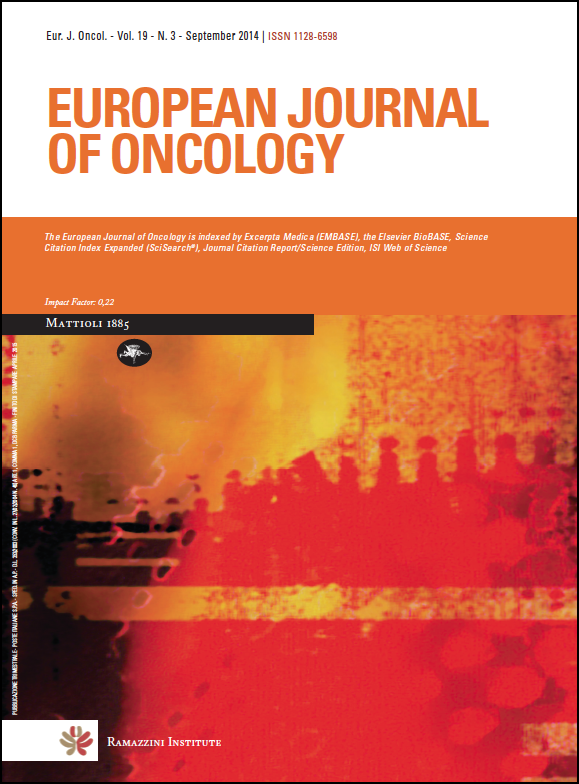Resource use and costs of newly diagnosed cancer initial medical care
Keywords:
cancer incidence and cost, newly diagnosed, resource use patterns, retrospective, database, oncology, SerbiaAbstract
Aims: Assessment of direct medical costs of cancer diagnosis and treatment for newly diagnosed cancer patients; analysis of patterns of medical service utilization; description of costs according to ICD-10 diagnosis, age and stage at diagnosis; identification of major cost drivers; description of cost of terminal stage patients at the end of life. Material and methods: A retrospective, bottom-up database analysis was conducted on insurance claims and cancer registries. A payer’s perspective and six-month time span were adopted. Results: Duration of observation was 170+/-106 days (CI95%;164-176 ). A total of 1222 newly diagnosed cancer patients consumed on average € 6,837 (standard deviation [SD] € 24,523, range € 1-€ 438,042) per patient, in the first half year of treatment. Out of 151 deceased patients the mean survival time from diagnosis was 75+/-109 days (CI95%; 57-92). The mean cost of care was € 6,949 (SD € 36,414) per patient. Pharmaceuticals with monoclonal antibodies, in particular, were dominant among cost domains. The combined budget impact of this patient cohort was € 8,154,214 or € 6,837 per patient. Conclusion: The cost differentials of initial oncology diagnostics and treatment are substantial among major ICD-10 malignancy groups. The deceased - mostly late diagnosed, advanced stage patients - cost approximately twice in terms of terminal care compared to survivors, bearing in mind their short survival time. Evidence-based resource allocation in line with market demand for services will remain a key challenge in the provision of more effective and less costly oncology care in the Balkans.Downloads
Published
Issue
Section
License
OPEN ACCESS
All the articles of the European Journal of Oncology and Environmental Health are published with open access under the CC-BY Creative Commons attribution license (the current version is CC-BY, version 4.0 http://creativecommons.org/licenses/by/4.0/). This means that the author(s) retain copyright, but the content is free to download, distribute and adapt for commercial or non-commercial purposes, given appropriate attribution to the original article.
The articles in the previous edition of the Journal (European Journal of Oncology) are made available online with open access under the CC-BY Creative Commons attribution license (the current version is CC-BY, version 4.0 http://creativecommons.org/licenses/by/4.0/).
Upon submission, author(s) grant the Journal the license to publish their original unpublished work within one year, and the non exclusive right to display, store, copy and reuse the content. The CC-BY Creative Commons attribution license enables anyone to use the publication freely, given appropriate attribution to the author(s) and citing the Journal as the original publisher. The CC-BY Creative Commons attribution license does not apply to third-party materials that display a copyright notice to prohibit copying. Unless the third-party content is also subject to a CC-BY Creative Commons attribution license, or an equally permissive license, the author(s) must comply with any third-party copyright notices.

